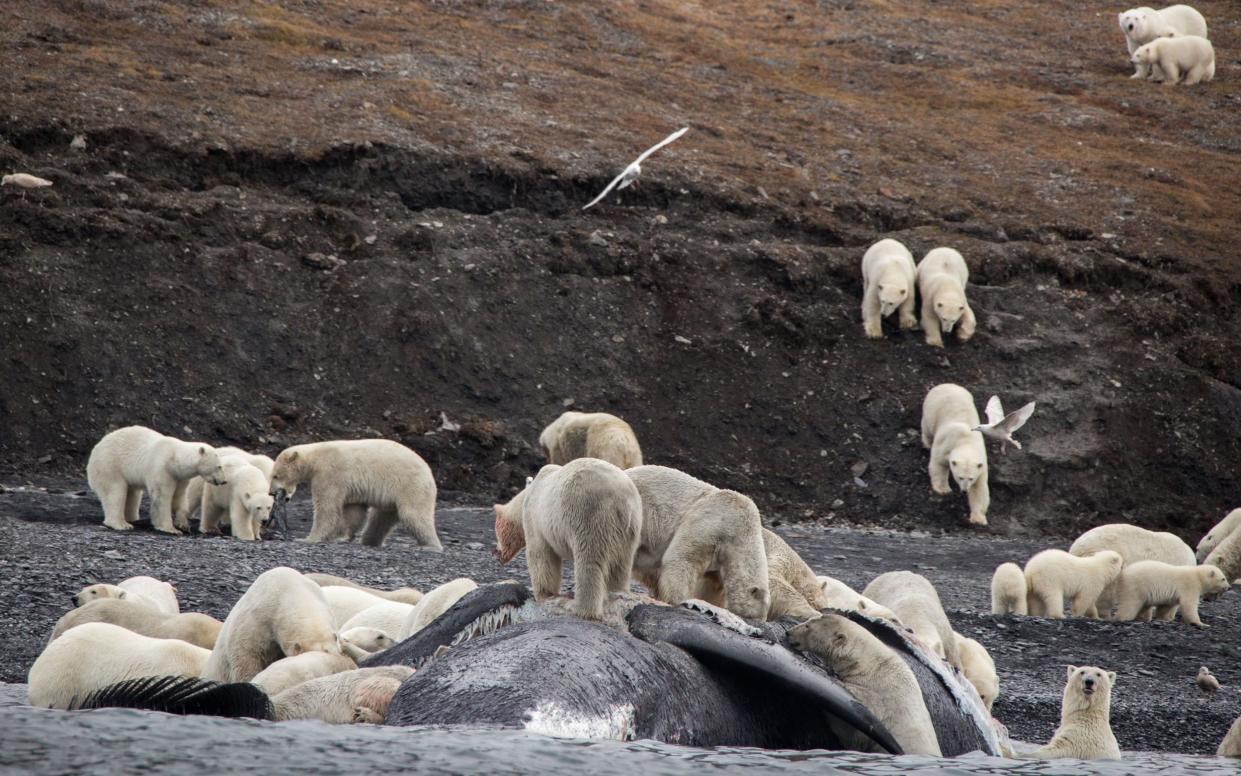Melting ice threatens school run as polar bears forced inland

Russian villagers living in the far north-east have had to stop their children from walking to school as a precaution against polar bear attacks, as melting Arctic ice forces more of the giant predators into conflict with humans on land.
Alarming pictures showing 200 polar bears converging to feed on a whale carcass, which washed ashore on Wrangel Island, have added to concerns that climate change is forcing the carnivores to change their behaviour.
Polar bears live on land but hunt on ice, which is the only way they can catch the seals they prefer to eat. But as sea temperatures have risen the ice has retreated toward the north, away from the islands where polar bears live and breed.
As a result, polar bears have had to look for other sources of food, experts said. The bears photographed on Wrangel Island had come to feast on the carcass of a bowhead whale, later resting around the food source.
"It was a completely unique situation," said Alexander Gruzdev, director of the island's nature reserve where the encounter was photographed from a tourist boat in September. "We were all gobsmacked, to be honest."

Experts say locals are also increasingly at risk from hungry animals venturing into villages.
“They specialise on getting food on the ice, and it is hard for them now in places,” said Mikhail Stishov, who worked as a biologist on Wrangel Island for two decades. “They always pick up food on the shore, dead animals, whales and walruses, they do everything now. They feed on bird colonies, according to our observations on Wrangel they've started to dig up lemmings.”
Bears have been approaching military bases and meteorological stations on Wrangel and other islands more often, or retreating to the Russian mainland where villages are located, he added.
All this increases the risk of dangerous run-ins with humans.
Since mid-October, polar bears have been coming dangerously close to a Chukotka village called Ryrkaipy, which is located near Kozhevnikov Cape, an important site for walrus gatherings, or haulouts, that lies about 124 miles south of Wrangel Island.
With changing ice conditions, walruses can be forced to come ashore in steep unsuitable areas.
This year, hundreds died as the huge animals crushed one another, possibly after being disturbed by a predator, said Viktor Nikiforov, a polar bear specialist and coordinator of Marine Mammals expert centre.
Some walrus corpses then floated to the village, attracting polar bears. "One bear broke the window of a house," Nikiforov said.
The village went on high alert, forbade children from walking to school and cancelled some public events, reports said.
“Since bears are more hungry, and they're actively looking, they smell food, and they of course they come up to human dwellings, and that leads to conflicts with people,” said Maria Gavrilo, who was until recently the deputy director of the Arctic National Park.

 Yahoo News
Yahoo News 
